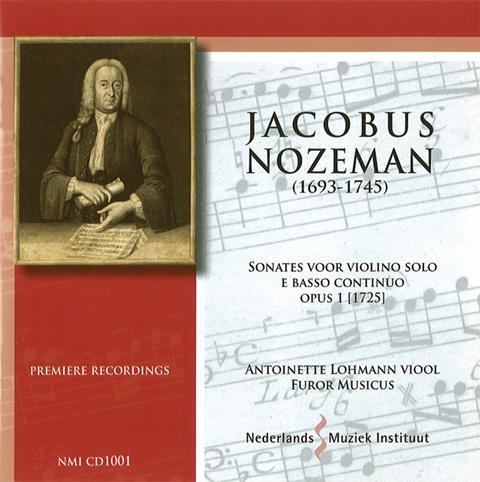
The Strad Issue: January 2011
Description: Generic Baroque sonatas enlivened by a rich array of continuo colours
Musicians: Antoinette Lohmann (violin) Furor Musicus
Composer: Nozeman
These six conservative sonatas (c.1724) by the German-born Dutch composer Jacob Nozeman (1693–1745) comprise a mix of church and largely chamber sonata movement types. Antoinette Lohmann shows herself to be a stylish, assured, period-attuned violinist, who mixes a clean, often sweetly singing line with tasteful ornamentation in the slow movements and demonstrates incisive and sometimes abrasively invigorating playing in the fast ones. Highlights include her expressive interpretation of the two amoroso arias of no.2, her contemplative Sarabanda of no.3, her hushed Siciliana of no.5 and her anguished opening Adagio of no.4. Also commendable are her clearly articulated passagework in the Gigue of no.2, her rhythmic flexibility and harmonic sensibility in the Allemanda of no.1, and the rustic quality, complete with tambourine, given to the finale of no.6, which is worked to a rousing conclusion.
Lohmann’s six continuo colleagues in Furor Musicus provide excellent support, offering a diversity of instrumentarium appropriate to the spirit and practice of early 18th-century domestic music making. The result is a kaleidoscope of instrumental colours, including even a bassoon in the finale of no.5, which adds considerable interest to what is otherwise typical Baroque Italianate fare. Recorded sound and balance allow the subtlest of shadings to register with meaningful impact.
ROBIN STOWELL
































No comments yet